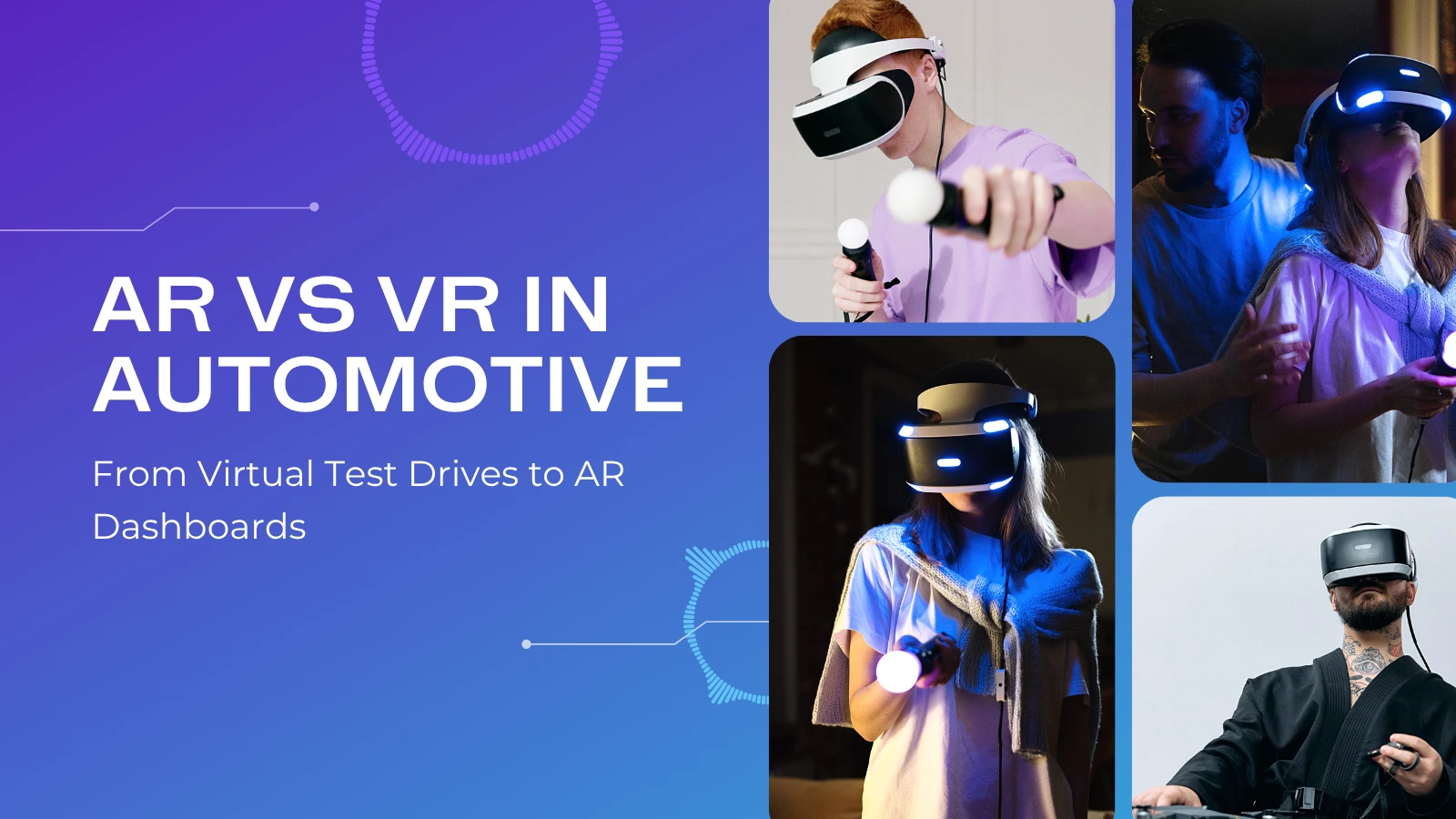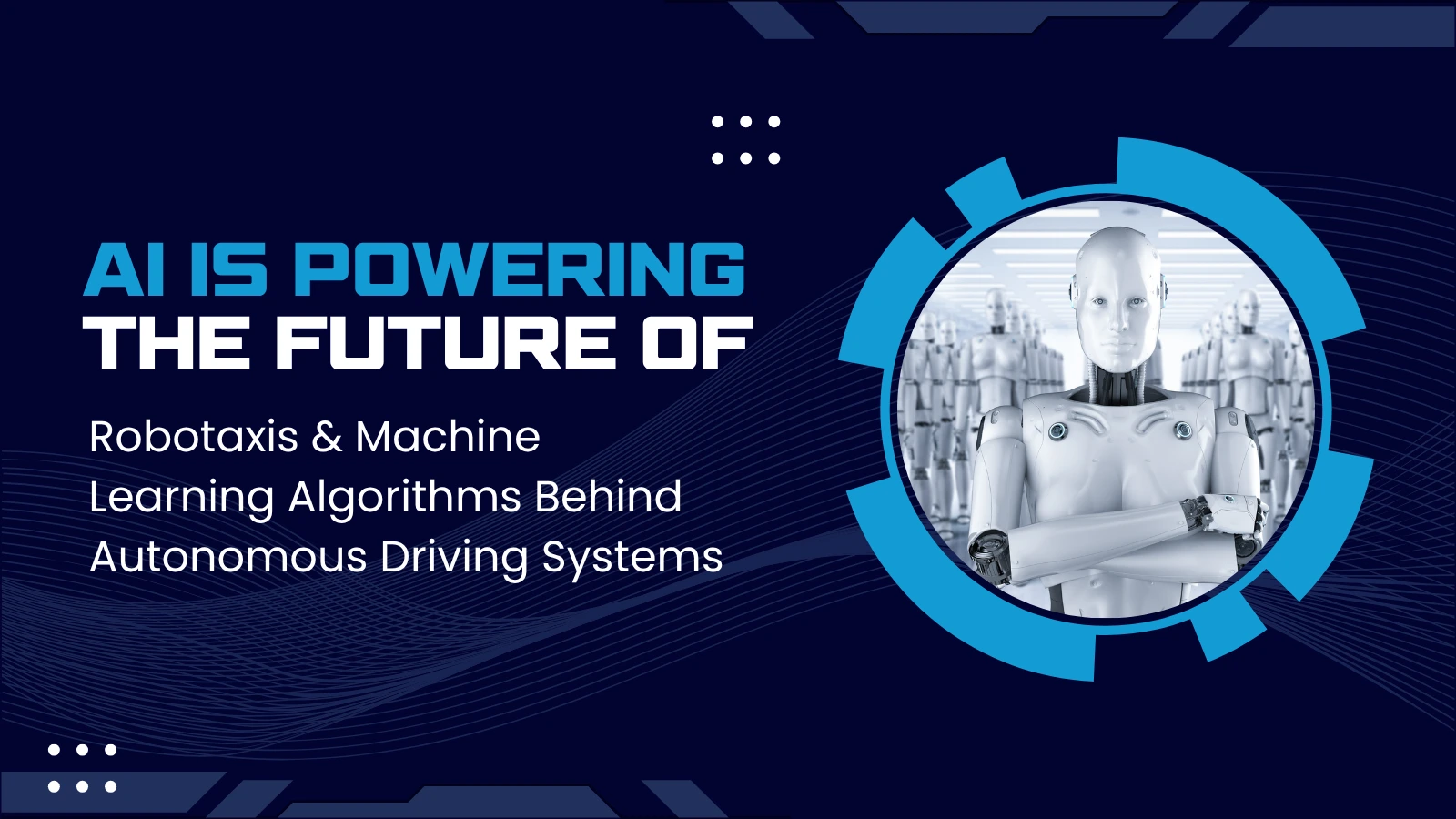AI Meets XR: The Fusion Driving Next-Gen AR, VR, and MR Experiences
The Evolution of XR: From Immersive Vision to Intelligent Interaction
The past ten years have seen a revolution in Extended Reality (XR), which includes Augmented Reality (AR), Virtual Reality (VR), and Mixed Reality (MR). It was originally pushed by graphics advancement and hardware enhancement, and XR was primarily visual and interaction-constrained. We are now on the brink of a whole new era: XR driven by artificial intelligence. This leap from visual immersion to wiser interaction is paving the way for richer, more tailored experiences that recast the way users interact with digital space.
AI is critical in changing XR from reactive interfaces to predictive, responsive, and adaptive ecosystems. For instance, in current VR games and simulations, machine learning algorithms adapt game difficulty or story dynamically according to the behavior, emotion, and decision patterns of the user. In AR-based shopping experiences, AI enables apps to learn customer tastes over time and personalize product recommendations in real-time within their physical contexts.
This convergence is most notable in the area of ar vr app development services. Developers now incorporate AI into XR platforms to develop apps that provide smart voice assistants, computer vision-based object identification, natural language processing, and predictive analysis. Whether it's an AR fitness mirror that refines routines according to real-time posture analysis or an MR medical training simulation that adjusts according to a learner's expertise, the intersection of AI and XR is making usability and efficacy increase.
As XR continues to evolve, the need for sophisticated AI development services is on the increase. Businesses are looking for more than a simply immersive environment—they want to have systems that recognize, learn, and react. In other words, AI-enhanced XR is as much about experiencing the virtual world as it is about engaging the virtual world as real. The future of XR will be dramatically defined by the cognitive wisdom AI has to offer.
AI-Powered Spatial Awareness: Intelligent Environments in XR
Artificial Intelligence greatly enhances the spatial awareness of AR, VR, and MR systems, making environments that not only map out physical space but comprehend it contextually. SLAM (Simultaneous Localization and Mapping) was used in traditional XR systems for spatial mapping, but current AI-driven solutions do more—they interpret depth, recognize objects, and comprehend user intent in real time.
In AR scenarios, computer vision from neural networks can now identify people, pets, furniture, or signs and place relevant content on top that's dynamic and context-aware. An example is an AR shopping app that shows nutrition facts for food a user scans with a phone in a supermarket or presents real-time size suggestions for a shoe being fitted. These features are enabled by AI development services with the integration of object detection, scene classification, and even semantic segmentation.
In the world of MR, spatial computing becomes smart in a whole new way. Take the example of training simulations for firemen, where AI reads user motion and dynamically changes the MR environment, for example, introducing new perils based on previous choices. AI models monitor user attention, stress levels (through biometric sensing), and activity to provide hyper-personalized, adaptive learning trajectories. None of this would be possible without the accurate integration of XR hardware with AI's spatial capabilities.
AI also transforms the backend of ar vr app development services. Developers now depend on AI not only during user engagement but also in the process of creation. Generative AI helps in designing 3D worlds based on instructions, adapting automatically to room dimensions, lighting conditions, or even emotional cues heard in the voice of the user.
Finally, spatial intelligence in XR, augmented by AI, connects the physical and digital worlds more intuitively than ever before. AI doesn't merely look at the room—it comprehends the room, the intent of the user in it, and how to most effectively assist their path through it.
Natural Language and Emotion Recognition: Humanizing Virtual Interaction
As XR platforms continue to target enterprise, healthcare, and educational sectors, some of the strongest AI integrations have been for natural language processing (NLP) and recognition of emotions. Those days when users had to use controllers or restricted voice instructions to communicate within VR are far behind. Currently, users are able to chat with virtual assistants, describe queries, or even get frustrated—and the system offers a smart reaction.
Artificial intelligence-based natural language understanding (NLU) makes it possible for XR interfaces to understand user intent, context, and tone. In ar vr app development services, this means the development of apps where users can have full, dynamic conversations with virtual assistants or characters. In educational VR, a pupil can pose complicated, context-filled questions to a virtual tutor and get coherent replies. In customer service MR environments, AI processes spoken issues and mimics an apt response—mirroring sympathetic human-like behavior.
In addition, emotional recognition has been a strong additive. Through AI-powered analysis of voice modulation, facial information (through facial tracking), and physiological signals, XR systems can measure user mood or engagement level. For instance, a clinical VR application can identify stress in a patient's voice and transform the environment to one that is more relaxing—such as changing a simulation from an urban street to a peaceful forest.
These capabilities are further accelerated by ai as a service solutions. Developers and businesses can now embed strong pre-trained models for sentiment analysis, speech-to-text, and emotion classification into their XR experiences without having to train their own AI systems from scratch. This democratization of access to AI fuels innovation across industries.
What this really ends up being is humanized interaction—XR experiences that hear, comprehend, and adjust not only to what the users do but to how they feel. Combining NLP and emotion AI with immersive space is revolutionizing XR from mechanistic simulation into emotional, smart engagement.
Personalized and Predictive Experiences Through Machine Learning
Machine learning, the foundation of contemporary AI, is revolutionizing XR into a world of adaptive, anticipatory experiences. In contrast to conventional software that performs predetermined logic, AI allows programs to learn from a user's interaction patterns, preferences, and behavior over time. The resultant personalization makes for a radically better user experience—whether in entertainment, education, healthcare, or commerce.
Within game development, say, machine learning monitors a user's history in order to level difficulty, pre-empt tactic, or make suggestions. AI recalls whether they like to linger and explore when playing through, or if they enjoy puzzles before combat, then tailors story or gameplay along those lines accordingly. Such ability is being introduced into next-gen ar vr application development services as a means to deliver dynamic and responsive storytelling tailored to each unique user.
In medical MR applications, AI models can learn from user performance in physical therapy exercises and modify exercises in real time to prevent strain or overexertion. Predictive analytics can detect latent health risks or recovery barriers based on subtle patterns of movement and biometrics. With ai development services, medical XR platforms can now provide not just immersive simulations but also smart diagnoses and rehabilitation monitoring.
Retail and online commerce gain a lot from predictive personalization in AR. AI-driven AR mirrors and product configurators can be trained on shopping habits, fashion preferences, and even body metrics to provide very targeted recommendations. With ai as a service, retailers can bring these features into their XR channels fast and inexpensively.
As XR systems become more like living spaces—remembering, anticipating, and adjusting—the user experience is smoother, more contextual, and more immersive. AI-powered personalization is not just a nicety; it's becoming an integral expectation of immersive technology, making sure XR doesn't simply react—it adapts with the user.
Building the Future: AI-Powered XR Across Industries
The intersection of AI and XR is opening up new potential in virtually every industry. From development to deployment, the injection of smart algorithms into immersive environments is fundamentally changing industries—reshaping both consumer expectations and the business models of XR experiences themselves.
In production, AI-based MR applications help factory workers with hands-free real-time diagnostics, repair instructions, and equipment insights. MR applications employ computer vision and machine learning models to detect problems before they arise, improving safety and minimizing downtime. In logistics, AI-powered AR glasses streamline warehouse activity by directing workers through dynamic, real-time data overviews.
Another significant beneficiary is the health sector. Surgical training in VR now utilizes AI to tailor complexity levels to a physician's competence, examine accuracy, and forecast complications. With AI-enabled VR in mental health therapy, safe, personalized exposure therapy environments for phobia treatment, PTSD treatment, and anxiety are provided, which adjust environment real-time based on user feedback and biometrics.
Education and vocational training are being transformed as well. With ai as a service tools, schools implement smart XR classrooms where virtual instructors adjust to the learning speed and approach of every student. Likewise, companies apply AI-enhanced VR for employee induction, customer support training, and leadership training—giving feedback, marking performance, and getting better over time.
Notably, the ar vr app development services ecosystem is changing to address these cross-industry needs. Today's developers aren't simply writing visual experiences—they're embedding cloud-based AI models, edge computing, and real-time data processing into apps that think and behave in harmony with users.
As enterprises continue to invest in AI development services, we can expect even more sophisticated applications to emerge. The future of XR isn’t just virtual—it’s intelligent. AI ensures that XR is no longer a passive medium for content delivery but a smart, responsive, real-time partner in solving problems, teaching skills, enhancing wellness, and driving creativity.
Subscribe Now
Get the weekly updates on the newest brand stories, business models and technology right in your inbox.
More Blogs
AR vs VR in Automotive_ From Virtual Test Drives to AR Dashboards
The automotive industry has experienced transformative changes in the recent years, all thanks to breakthroughs in immersive technology. The most notable changes are due to Augmented Reality (AR) and Virtual Reality (VR). The debate of...
App Store Optimization (ASO) Tips to Boost iOS & Android App Downloads
The process of increasing your program's exposure and download volume in the Apple program Store is known as app store optimization, or ASO. By customizing the right keywords, metadata, and user interaction metrics, ASO, like Search En...
How AI is Powering the Future of Robotaxis & Machine Learning Algorithms Behind Autonomous Driving Systems
Robotaxis are fast becoming a science fiction dream turned reality, revolutionizing the way individuals move around cities. Robotaxis—autonomous vehicles that can transport people without the need for drivers—is revolutioni...

 Awards & Recognition
Awards & Recognition







